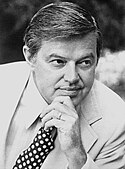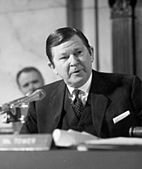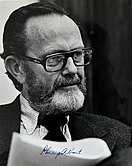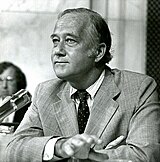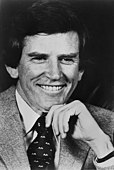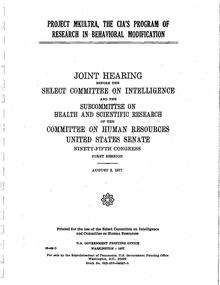| الرئاسة العامة لهيئة الأمر بالمعروف والنهي عن المنكر | |

Seal of the Committee
| |
| Agency overview | |
|---|---|
| Formed | 1940 |
| Agency executive |
|
| Website | https://www.pv.gov.sa |
The Committee for the Promotion of Virtue and the Prevention of Vice (Arabic: الرئاسة العامة لهيئة الأمر بالمعروف والنهي عن المنكر), abbreviated CPVPV and colloquially termed hai’a (committee), is a Saudi government religious authority charged with implementing the Islamic doctrine of hisbah. It traces its modern origin to a revival of the pre-modern official function of muhtasib (market inspector) by the first Saudi state (1745–1818). The committee was established in 1976 in its current form, with the main goal of supervising markets and public morality. It has been assisted by volunteers, and often described as Islamic religious police. It has been called mutawa, mutaween and by other similar names in English-language sources, with various translations.
In the early 2010s, the committee was estimated to have 3,500-4,000 officers on the streets, assisted by thousands of volunteers, with an additional 10,000 administrative personnel. Committee officers and volunteers have been known to patrol public places, with volunteers focusing on enforcing strict rules of hijab, segregation between the sexes, and daily prayer attendance. Officers were authorized to pursue, detain and interrogate suspected violators prior to the 2016 reforms.
Names
The name of the committee has also been translated as Committee for the Propagation of Virtue and the Elimination of Sin, abberviated CAVES. They are known colloquially as hai’a (literally "committee", also transliterated as Haia or Hayaa).
In academic sources, committee officers or the volunteers have also been called by several Arabic terms derived from the root ṭ-w-ʿ, including mutaṭawwiʿūn (Arabic: متطوعون, volunteers), muṭawwiʿ (Arabic: مطوع, one who compels obedience), and muṭāwiʿa (no literal translation given). These words are etymologically related to the Quranically derived terms muṭṭawwiʿa and mutaṭawwiʿa (those who perform supererogatory deeds of piety). English-language press has used the names mutawa and mutaween.
History and structure
The committee's rationale is based on the classical Islamic doctrine of hisba, which is associated with the Quranic injunction of enjoining good and forbidding wrong, and refers to the duty of Muslims to promote moral rectitude and intervene when another Muslim is acting wrongly. In pre-modern Islamic history, its legal implementation was entrusted to a public official called muhtasib
(market inspector), who was charged with preventing fraud, disturbance
of public order and infractions against public morality. This office
disappeared in the modern era everywhere in the Muslim world, including
Arabia, but it was revived by the first Saudi state (1745–1818) and
continued to play a role in the second (1823–87), due to its importance
within Wahhabi doctrine. Under the third Saudi state, the most zealous
followers of Ibn Sa'ud were appointed as muhtasibs, but their
severity caused conflict with the local population and foreign pilgrims.
In response, committees were established in Riyadh and Mecca in 1932 to
check their excesses. In 1976 the committees were united under an
official of ministerial rank, acting under direct royal command. The
unified Committee for the Promotion of Virtue and the Prevention of Vice
is mainly responsible for supervising markets and public order. It has
been assisted by volunteers, who enforce attendance of daily prayers and
gender segregation in public places.
In 2009, the CPVPV created and formalized a special
"Anti-Witchcraft Unit" to "educate the public about the evils of
sorcery, investigate alleged witches, neutralize their cursed
paraphernalia, and disarm their spells". The unit also had a hotline on
the CPVPV website for Saudis to report any magic to local officials.
In January 2012, Abdul Latif Abdul Aziz al-Sheikh was appointed head of the mutaween.
He "holds the rank of cabinet minister and reports directly to the
king". His agency employs more than 4,000 “field officers” and
reportedly has another 10,000 administrative personnel. Its 2013 budget
was the equivalent of $390 USD million.
Enforcement
The
Committee for the Promotion of Virtue and the Prevention of Vice
enforces traditional Islamic morality by arresting or helping to secure
the arrest of people who engage in conduct that violates Islamic
principles and values. They are tasked with enforcing conservative
Islamic norms of behavior defined by Saudi authorities. They monitor
observance of the dress code and ensure that shops are closed during
prayer times. In some instances, they broke into private homes on
suspicion of untoward behavior, though this attracted criticism from the
public and the government.
Upon being appointed head of the CPVPV, Abdul Latif Abdul Aziz
al-Sheikh identified "five areas the religious police should focus on":
preserving Islam, preventing blackmail, combating sorcery, fighting
human trafficking, and ensuring that no one disobeys the country’s
rulers.
Saudi mutaween are often accompanied by the regular police, but
also patrol without police escort. They recently launched a website on
which un-Islamic behavior can be reported.
While on patrol, the duties of the Mutaween include, but are not restricted to:
- ensuring that drugs including alcohol are not being traded.
- checking that women wear the abaya, a traditional cloak.
- making sure that men and women who are spotted together in public are related.
- formerly, enforcing the ban on camera phones. This ban was enacted out of a fear that men would use them to secretly photograph women and publish them on the Internet without the consent of the subjects. The ban was enacted in April 2004 but was overturned in December that same year.
- preventing the population from engaging in "frivolous" Western customs such as Valentine's Day.
The punishment for such offenses is severe, often involving beatings
and humiliation, and foreigners are not excluded from arrest.
The mutaween encourage people to inform on others they know who are
suspected of acting unvirtuously, and to punish such activities.
In 2010, a 27-year-old Saudi man was sentenced to five years in prison, 500 lashes of the whip, and a SR50,000 fine after appearing in an amateur gay video online allegedly taken inside a Jeddah
prison. According to an unnamed government source, “The District Court
sentenced the accused in a homosexuality case that was referred to it by
the Commission for the Promotion of Virtue and Prevention of Vice (the
Hai’a) in Jeddah before he was tried for impersonating a security man
and behaving shamefully and with conduct violating the Islamic
teachings.” The case started when the Hai’a’s staff arrested the man
under charges of practicing homosexuality. He was referred to the Bureau
for Investigation and Prosecution, which referred him to the District
Court.
Among the Western practices suppressed by the mutaween is the
celebration of Valentine's Day. Condemning the festivities as a "pagan
feast", Mutaween inspect hotels, restaurants, coffeehouses, and gift
shops on 14 February to prevent Muslim couples from giving each other
Valentines or other presents. The sale of red roses, red stuffed
animals, red greeting cards and other red gift items is banned,
according to store owners. These items are confiscated, and those
selling them subject to prosecution.
The children's game Pokémon was banned in 2001. The sale of the fashion doll Barbie was banned as a consumer product for posing a moral threat to Islam, stating: "Jewish Barbie dolls, with their revealing clothes and shameful postures, accessories and tools are a symbol of decadence to the perverted West. Let us beware of her dangers and be careful." Fulla dolls were designed and approved as more acceptable.
In 2006 the police issued a decree banning the sale of dogs and
cats, also seen as a sign of Western influence. The decree which applies
to the Red Sea port city of Jeddah and the holy city of Mecca
bans the sale of cats and dogs because "some youths have been buying
them and parading them in public," according to a memo from the
municipal affairs ministry to Jeddah’s city government. In 2013 two Saudi men were arrested for giving "free hugs to passersby".
In December 2010 it was reported by Arab News that the Hai'a had launched a massive campaign against "sorcery" or "black magic" in the Kingdom. The prohibition includes "fortune tellers or faith healers". (Some people executed for sorcery
following the announcement include a man from Najran province in June
2012, a Saudi woman in the province of Jawf, in December 2011, and a
Sudanese man executed in September 2011. A Lebanese television presenter
of a popular fortune-telling programme was arrested while on pilgrimage
to Saudi Arabia and sentenced to death, though after pressure from the
Lebanese government and human rights groups, he was freed by the Saudi
Supreme Court.)
In May 2012, the head of the mutaween, Abdul Latif Abdul Aziz
al-Sheikh, stated that anyone using social media sites, such as Twitter,
"has lost this world and his afterlife".
According to authors Harvey Tripp and Peter North, mutaween became involved in the city planning of the Eastern Province industrial city of Jubail
sometime in the 1980s and 1990s. Halfway through the construction of
that city the mutaween visited the engineering drawing office several
times, first to insist that all planning maps included the direction of Mecca.
On their second visit they ordered that city sewage lines (already
built) not flow in the direction of Mecca. After being convinced that
the curvature of the earth prevented this, the mutaween returned to
insist that the drainage pipes of toilets inside the city's buildings
also not violate this principle. The mutaween's demands came despite the
fact that no Saudi building code mentioned their requirement and no
other Saudi cities met it. While a good deal of the planners' and
engineers' time was spent responding to the mutaween's concerns, the
mutaween never returned to approve the contractor's solution and no
pipes ended up having to be unearthed and redirected, leaving Tripp and
North to conclude that Mutaween's "point" was not to protect Mecca but
to demonstrate the supremacy of religion in Saudi Arabia to foreign
builders.
Exemptions
The offices of Saudi Aramco, King Abdullah University of Science and Technology, and foreign embassies are off limits to mutaween.
Not off limits are personnel of Saudi government agencies. Hai’a have been known to detain government officials, (A male government employee minder of American journalist Karen Elliott House
was detained for mixing of the sexes, causing her to wonder that "a
government employee following the instructions of his ministry runs
afoul of that same government's religious police.")
Restriction of powers
On 11 April 2016, the Saudi Council of Ministers issued a new regulation that limits the jurisdiction of the Committee for the Promotion of Virtue and the Prevention of Vice.
The new regulation has 12 clauses; most notable of them are:
The Committee for the Promotion of Virtue and Prevention of Vice is expected to uphold its duties with kindness and gentleness as decreed by the examples of Prophet Mohammed.
The Committee has the responsibility of reporting, while on patrol, to official authorities (depending on the suspected activity) any suspected crimes witnessed. Subsequent actions from pursuit of suspect, capture, interrogation and detainment will be left to the relevant official authorities.
Neither the heads nor members of The Committee are to stop or arrest or chase people or ask for their IDs or follow them - that is considered the jurisdiction of the police or the drug unit.
Controversy
Alleged abuses
One of the most widely criticized examples of mutaween enforcement of
Sharia law came in March 2002, when 15 young girls died of burns or
smoke asphyxiation by an accidental fire
that engulfed their public school in Mecca. According to two
newspapers, the religious police forcibly prevented girls from escaping
the burning school by locking the doors of the school from the outside,
and barring firemen from entering the school to save the girls, beating
some of the girls and civil defense personnel in the process. Mutaween
would not allow the girls to escape or to be saved because they were
'not properly covered', and the mutaween did not want physical contact
to take place between the girls and the civil defense forces for fear of
sexual enticement.
The CPVPV denied the charges of beating or locking the gates, but the
incident and the accounts of witnesses were reported in Saudi newspapers
such as the Saudi Gazette and Al-Iqtisaddiyya. The result was a very rare public criticism of the group.
In May 2003, Al-Watan,
a Saudi reform newspaper published several reports of people being
mistreated by the police force, including the story of one woman from a
remote southern town who had been beaten and held in solitary
confinement for riding alone in the back of a taxi.
In May 2007, a man alleged to have alcohol in his home (Salman Al-Huraisi) was reported by Arab News to have been arrested and beaten to death in his own home by CPVPV members in the Al Oraija district of Riyadh.
"The father of the deceased said that commission members continued to
beat his handcuffed son, even though he was already covered in blood,
until he died" at the Oraija CPVPV center in Riyadh.
Another man who died while in custody of the CPVPV was Ahmed Al-Bulawi.
He was a driver for a woman with whom he was accused of being in a
state of seclusion (when a man and an unrelated woman are together) and
died after being taken to a CPVPV center in Tabuk in June 2007.
According to Irfan Al-Alawi, "in both cases, the families of the
victims took the mutawiyin to court, and in both instances (as in
others) charges against the mutawiyin were postponed indefinitely or
dropped."
A case of "sorcery" that led to a sentence of death which was overturned was that of Ali Hussain Sibat, the Lebanese host of the popular TV call-in show aired on satellite TV across the Middle East. Sibat was arrested in Medina by the CPVPV in May 2008, while visiting Saudi Arabia to perform the Umrah pilgrimage.
Sibat was charged with "sorcery" for making predictions and giving
advice to the audience on his show. On 9 November 2009, after court
hearings not open to the public or a defense lawyer Sibat was sentenced
to death. The case was upheld on appeal but after an international outcry was overturned by the Supreme Court on November 11, 2010.
The case was controversial in part because neither the defendant or
"victims" were Saudis, and the "crime" was not committed in Saudi
Arabia.
Mutaween suppression of religious activity by non-Muslims in Saudi Arabia is also controversial. Asia News
alleges that "at least one million" Roman Catholics in the kingdom are
being "denied pastoral care ... none of them can participate in mass
while they are in Saudi Arabia ... Catechism for their children – nearly
100,000 – is banned." It reports the arrest of a Catholic priest for
saying mass. On 5 April 2006 a Catholic priest, "Fr. George [Joshua] had
just celebrated mass in a private house when seven religious policemen
(muttawa) broke into the house together with two ordinary policemen. The
police arrested the priest and another person."
In August 2008, a young Saudi woman who had converted to Christianity
was reportedly burnt to death after having her tongue cut out by her
father, a member of the Committee, though it was not an officially
sanctioned act of punishment.
In January 2013, the CPVPV marched into an educational exhibit of
dinosaurs at a shopping center, "turned off the lights and ordered
everyone out, frightening children and alarming their parents". It was
not clear why the exhibit—which had been "featured at shopping centres
across the Gulf for decades"—was closed, and Saudis speculated
irreverently as to the reason on Twitter.
In September 2013 the entrance of a Saudi religious police
building "was intentionally set on fire by assailants", according to the
Hai'a. No one was hurt and no further information was provided by the
police. In early 2014, the head of Hai'a, Sheikh Abdul Latif al-Sheikh was quoted in the Okaz
daily newspaper as saying that “there are advocates of sedition within
the Commission" for the Promotion of Virtue and Prevention of Vice, and
promised to remove them.
Internal dispute
In
2009, the head of the Hai'a in Mecca, Sheikh Ahmad Qasim al Ghamdi,
stated that there was nothing wrong with men and women mixing in public
places, and instructed his mutawa'a to not interfere with mixing.
However religious conservatives pressured the national head of the
Hai'a to fire him. "Within hours of the firing of the Sheikh Al Ghamdi,
the Hai'a issued an embarrassing retraction: `The information sent out
today concerning administrative changes at some Hai'a offices,
particularly those concerning Mecca and Hail, was inaccurate and the
administration has requested editors not to publish it.`" However the
firing and the retraction of the firing became "major news". "Outraged
conservatives went to Sheiksh Al Ghamdi's home, demanding to `mix` with
his females... still other outraged opponents scrawled graffiti on his
home," according to journalist Karen Elliott House.
Involvement in politics
Other
accusations leveled at the CPVPV include that some of its members have
been involved in political subversion, and/or are ex-convicts/prisoners
who became Hafiz (i.e. memorized the Quran) to reduce their prison sentences. Author Lawrence Wright has written of a conflict between the Mutaween and at least one allied imam and Turki bin Faisal Al Saud, the head of the Presidency of General Intelligence (Al Mukhabarat Al A'amah)
between 1977 and 2001. After an imam denounced a female charitable
organizations run by some of Turki's sisters and accused them of being
"whores" during a Friday sermon, Turki demanded and received an apology.
He then "secretly began monitoring members of the muttawa. He learned
that many of them were ex-convicts whose only job qualification was that
they had memorized the Quran in order to reduce their sentences." But
Turki believed they had become "so powerful" they "threatened to
overthrow the government."
Another instance when the CPVPV has opposed the Saudi government
came in 2005 when the Minister of Labor announced a policy of staffing
lingerie shops with women.
The policy was intended to give employment to some of the millions of
adult Saudi women unhappily stuck at home (only 14.6% of Saudi women
work in the public and private sectors in the Kingdom), and to prevent mixing of the sexes in public (ikhtilat),
between male clerks and women customers. Conservative Saudis opposed
the policy maintaining that for a woman to work outside the house was
against her fitrah (natural state). The few shops that employed women were "quickly closed" by the Hai'i who supported the conservative position.
However, in 2011, during the Arab Spring,
King Abdullah issued another decree giving lingerie shops—and then
shops and shop departments specializing in other products for women,
such as cosmetics, abayas and wedding dresses—one year to replace men workers with women. Further clashes followed between conservatives and Hai'a
men on the one hand, and the ministry, women customers and employees at
female-staffed stores on the other. In 2013, the Ministry and the Hai'a
leadership met to negotiate new terms. In November 2013, 200 religious
police signed a letter stating that female employment was causing such a
drastic increase in instances of ikhtilat, that "their job was becoming impossible."
Political use
According
to one journalist with many years of experience in Saudi Arabia, Karen
Elliott House, the Hai’a are sometimes used to balance the policies of
the government; specifically a loose rein on the Hai'a acts to calm the
displeasure of the strong religious conservative forces in Saudi
society.
When the king dismissed a member of the Council of Senior Religious Scholars in 2009 for condemning gender mixing at King Abdullah University of Science and Technology,
he compensated for it by doing "nothing to curb the country's religious
police from roaming the kingdom's streets and harassing ordinary Saudis
mixing with anyone of the opposite genders".
Role
According to the US Library of Congress Country Studies, mutawwiin
"have been integral to the Wahhabi movement since its inception. Mutawwiin have served as missionaries, as enforcers of public morals, and as `public ministers of the religion` who preach in the Friday mosque. Pursuing their duties in Jiddah in 1806, the mutawwiin were observed to be `constables for the punctuality of prayers ... with an enormous staff in their hand, [who] were ordered to shout, to scold and to drag people by the shoulders to force them to take part in public prayers, five times a day.`"
Robert Lacey
describes them as "vigilantes". "The righteous of every neighbourhood
[that] banded themselves together into societies for the Promotion of
Virtue and the Prevention of Vice."
According to a study by Michael Cook,
based on "Wahhabi writings and rulers' decrees" the role of commanding
good and forbidding wrong developed a prominent place during the second Saudi emirate,
and the first "documented instance of a formal committee to enforces
the duty dates to 1926", when the official Saudi newspaper in Mecca
published the news of its establishment.
In 1976, the Al al-Sheikh director of the Committee gained a seat on the Saudi cabinet, strengthening its prestige.
Following the November–December 1979 Grand Mosque Seizure, when religion became more conservative in Saudi Arabia,
"people noticed that imams and religious folk seemed to have more money to spend ... with the religious police benefiting most obviously from government injections of cash. They started to appear in imposing new GMC vans, with their once humble local committees of mutawwa ... taking on the grander, `Big Brother` aura of their original, collective name -- Al Hayah, `the Commission`. They developed attitude to match."
They were still, however, "essentially volunteers engaged in their own variety of social work."
The deaths of 15 young girls in 2002 in Mecca from the mutaween's refusal to let them leave a burning school was widely publicized and damaged the mutaween's image.
In May 2006 it was announced that the committee would no longer
be allowed to interrogate those it arrests for behavior deemed
un-Islamic. Prior to this, commission members enjoyed almost total power
to arrest, detain, and interrogate those suspected of violating the
Sharia.
In June 2007 the Saudi mutaween announced "the creation of a
'department of rules and regulations' to ensure the activities of
commission members comply with the law, after coming under heavy
pressure for the death of two people in its custody in less than two
weeks". The governmental National Society for Human Rights
criticised the behaviour of the religious police in May 2007 in its
first report since its establishment in March 2004. In May 2006 the Interior Ministry
issued a decree stating that "the role of the commission will end after
it arrests the culprit or culprits and hands them over to police, who will then decide whether to refer them to the public prosecutor."
Time magazine ran a report about the mutaween in August 2007. It noted that "a campaign using text messages
sent to mobile phones is calling on a million Saudis to declare that
'2007 is the year of liberation.'" Despite statements of reform, the
mutaween turned down Time's request for interviews.
At the beginning of October 2012, during the Arab Spring,
Abdul Latif Abdul Aziz Al-Sheikh announced that the powers of the
mutawiyin would be significantly restricted. According to Irfan
Al-Alawi,
They will be barred from making arrests, conducting interrogations, or carrying out searches without a warrant from the local governor. They will no longer stand at the entrances of shopping malls to keep women out who do not adhere to the Wahhabi dress code or who are not accompanied by “approved” men—husbands, siblings, or parents.
"Community volunteers", who were the original mutaween, were forbidden
from joining Hai’a men on their rounds and pursuing, chastising, and
interrogating miscreants, as "a religious duty".
Field officers were also ordered to “approach people with a smile,” and
forbidden from using their "private e-mails, cellphones, or social
media accounts to receive and act on anonymous tips."
Other similar groups
Outside Saudi Arabia, in Iran, the Guidance Patrol functions as the country's main public religious police, imposing Islamic dress codes and norms in public. The Taliban regime, or Islamic Emirate of Afghanistan,
also had a "Ministry of the Propagation of Virtue and the Prevention of
Vice" with a very similar religious policing function. The Taliban are
thought to have borrowed the Saudi policing policy not only because they
also had a strict Sharia law policy, but because of alleged financial and diplomatic support from Saudi Arabia.
According to a Pakistani journalist who spent much time among the
Taliban, the Taliban who had been to Saudi Arabia before taking power in
Afghanistan "were terribly impressed by the religious police and tried
to copy that system to the letter".

